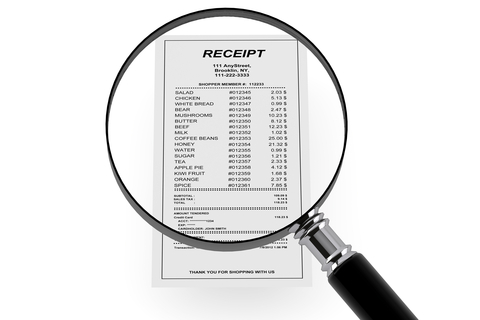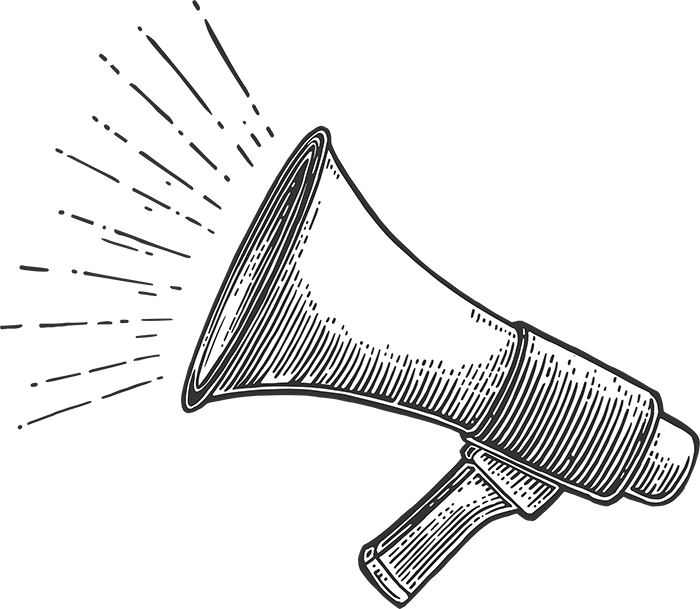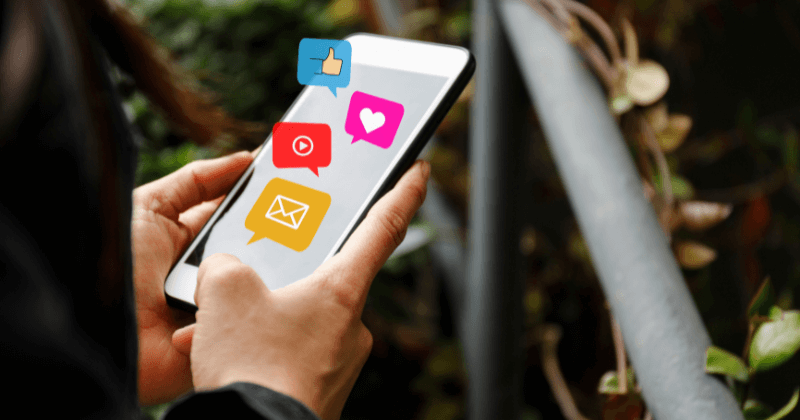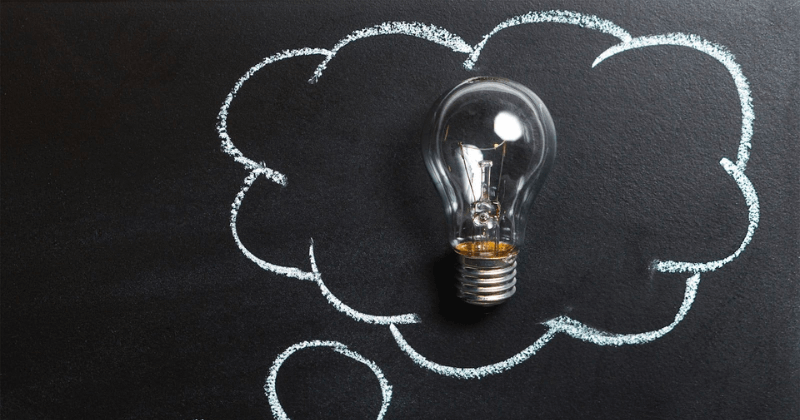Email Marketing Done Right: Finding Its Place in Your Digital Strategy and Using Data to Personalize the Experience
Email marketing is alive and well, and is an important part of your company’s content and communications strategy. When done right, email marketing is a seamless part of your digital marketing campaign, and continues to engage your customers long after that first conversion.
 With SES Chicago around the corner, I wanted to chat with one of the upcoming speakers, Sundeep Kapur. I caught him at SES San Francisco this year, and I liked his approach to using data to personalize email marketing.
With SES Chicago around the corner, I wanted to chat with one of the upcoming speakers, Sundeep Kapur. I caught him at SES San Francisco this year, and I liked his approach to using data to personalize email marketing.
Sundeep is a digital evangelist for NCR Corporation, a global technology company that provides products like point-of-sale terminals, barcode scanners and much more. He specializes in converged channel marketing strategy, from direct marketing to social media. Sundeep is also a teacher, and dubbed the “Email Yogi,” working with businesses across multiple industries to personalize and speak to consumers more effectively.
Sundeep and I sat down to chat about email marketing, and the conversation that follows is jam-packed with info on how email fits into the digital strategy, how to use transaction data to personalize emails, the future of mobile and email marketing, subject line optimization, campaign distribution times and much more.
Jessica Lee: Let’s start with your ideas on how search marketing and email marketing work together.
Sundeep Kapur: Let’s say we were the average consumer, and didn’t know much about search. And we turn on our computers, and we were in the market to buy a Blue-ray player.
The minute I type in those words, two types of businesses show up in the results: the businesses that have paid to be listed and those who have done all the right steps with their SEO.
When brands are performing this type of search marketing, they are really paying attention to the keywords they pick. So why doesn’t that brand take those words and start using those words not only in the email campaigns they are putting out, but also on their landing pages?
So you are beginning to get the customer to use those words and you are training the customer on what your brand is about. I think this is one of the simplest things that can be done, yet most people don’t do it.
So, it’s really about streamlining your messaging across channels …
Yes, that’s part of it. If I meet someone and they tell me they spend $15,000 a month on search, and spend another $10,000 a month on email marketing, and I ask to see the creative and the copy from what they do on the search side, and what they are doing on the email side, I wonder if they are two different groups.
And almost always they are. They don’t talk to each other, they don’t cross-optimize, and they miss out on a bunch of benefits.
Absolutely, in fact, I just wrote a post about a similar topic and how there really is a need for someone to be overseeing content in every single channel you’re in.
So, Jessica, let’s take that thought a little further. You talk about organizing your content. So if we were driving down the Pacific Coast Highway in California, and there’s a billboard — and we’re driving pretty fast — it probably doesn’t make sense to have a QR code on that billboard to attract the consumer’s attention.
But there’s something intriguing on the billboard that gets a person to find out what that ad was all about. I think what brands need to do is list out their main deals or whatever it is they are focusing on in a particular quarter for their customers, and then they need to start prioritizing how they are going to market them and through what channels.
What are they going to do from a search perspective, what are they going to do via email, and how are they going to strengthen it to engage with their consumers?

The billboard idea makes sense; if people are driving by and they have a few seconds to see a sentence or a group of words, they are probably going to use those same or similar words to perform a search.
So let’s talk now about attribution modeling and email campaigns. How do you show email marketing value in the bigger picture?
If I had a million dollars to spend, and I had to go to my manager and tell them how I was going to spend it. I would have to know multichannel attribution – where did I find that consumer, how they found me, what drove them there. Ultimately, that’s the test, where you know which channel drives what kind of results for you.
I think part of that opportunity in email marketing is when you put those words up on a billboard that are in your campaign, and they go search for those words and they find you. At this point, we go for the kill in engaging them a step further with the products or services that we sell.
So what if at that point, we took them through a two-step process where we got the person to give us their email or engage with us socially when they got to the site? Then we start engaging with them on that level.
When we talk about the value in email marketing, we are getting back to the same basic idea of no coordination. But one of the reasons there is no coordination is because people don’t look at the results of the campaigns.
If I was email and you were search, and I shared with you the results of my email marketing campaign, and you told me the results of your search marketing campaign, and then we pulled up the consumer that bought from us, and we suddenly realized that about a third of our existing customers came back to us because of search, would you consider that to be good or bad? Wouldn’t that be a waste of money?
So the thing that brands need to figure out is now that someone has come in via search, what is it that I can do to engage with them? What sort of welcome campaign or nurturing campaign can I put towards them to remind them that they shouldn’t go out there to search the Web to find a better deal?
At SES San Francisco, you talked a lot about personalization in email campaigns, and how to use data to make emails and the landing pages for those emails more personalized to the individual user. Can you talk a little bit about that?
If you sign up to receive email campaigns from me, at a basic level, I’m going to ask your name. Now, let’s say I run a steakhouse. When we take your order, we ask the customer how they like their steak – rare, medium rare, well done. When the customer goes away, and does not come back to the restaurant, are we going to grab the customer’s attention via email by saying something like:
“Hey, Jessica, I’ve got a great offer for you.” You’re probably going to like that because it’s personalized. But is it going to be more effective if I say:
“Jessica, I know you enjoyed that rare steak with the peppercorn sauce … did you like the wine we served with it?” And then I talk about that Malbec that you drank with it.
Today’s consumer knows that you know their name, and that you are going to try and make it personalized in that way. What makes it more effective is if I can remember your last transaction, and if I can use the data from your last transaction to go out and get feedback from you.

I have been doing a lot of split testing to see what invokes a consumer’s intention, and if I just use the name as a means of personalization, my open rates are 30 percent lower than if I ask you about the last transaction.
Let’s take this personalization a step further. If you are talking to someone at a call center, they might ask you in an automated message if you would like to take a quick survey. Brands pay a lot of money to do surveys, but they do very little to make it “real” or personalized.
If you completed a transaction and I was your rep on the phone, I might turn around and ask you for that survey personally by saying, “Hey, Jessica, could you please do me a small favor? My manager is ranking me on how I did on the phone today, and if you think I did a good job or if you have suggestions, can you participate in this survey?” And you’ve personalized that transaction.
Brands need to be doing this more often. But instead, they say, “No, we don’t want the personal pitch because we want that person to be serving the next person on the phone.”
But the personal pitch increases the likelihood of the customer taking the survey. And then why doesn’t the brand get you to take that survey on social media? That’s less money brands have to pay to acquire people on social.
It’s interesting because everyone talks about humanizing your brand and using social media to do that, but to hear you talk about personalization from an email marketing perspective, it’s seems so obvious. People don’t always make the connection outside the social channel. They think, “Oh social is the place to be personal,” but not anywhere else.
I was in a Catholic school for six years when I was young. Every week, we were forced to write four letters to our family and friends. One letter went to my parents, one went to my maternal grandparents, one went to my paternal grandparents and the other went to a friend.

And can you imagine, if after everything I went through, that recipient didn’t read my letter? It would have crushed me. And so the way I look at email is it’s your opportunity to communicate with your customer. Don’t trivialize it. Put the effort in, write it well, and make it look good with the expectation they are going to pay attention to that campaign.
It’s clear from listening to you that email marketing is alive and well and progressing with other developments and concepts in other industries. What’s next for email marketing?
I think we are going to see more and more messaging in mobile. You are going to see device become a preference center of sorts. And you are going to see that email combined with mobile is going to be a way to authenticate you. So if I want to make sure that I am indeed speaking to Jessica, I ask her three questions, I can maybe even use haptics to get your thumbprint transferred over to a server to make sure it is indeed you, before I serve you.
What are some of the things you are preparing for with email marketing and mobile optimization?
I wrote an article on ClickZ, where I talked about how many people make the mistake of just optimizing their email for a mobile device. Let’s assume that I was a travel company and I sent you an email that said, “Jessica, here are the top 10 destinations for you to visit.” And it was perfectly optimized for your iPhone, except you had to scroll to see every one of those 10.
Is that good, or is it better if I send you a mobile message that says, “Jessica here are the top 10 destinations for you to visit,” and I only list one or two of them in that mobile message?
So when people talk about optimizing content for mobile, I tell them it’s not about HTML5, it’s about saying, “OK, I’ve only got Jessica’s attention for about five seconds while she is going down that ‘freeway,’ I need to make sure that I only put two or less things in the offering for her.”
Also, if you know that someone has opened their email on a mobile device twice out of the last five times, why don’t you send them just the mobile version in the future, with a link on the top that says, “If you’d like to see the PC version, click here”? It’s worked well for me and I’ve seen numbers go up from that.
Makes sense. So about this click through from the email to the expanded message in mobile; you haven’t found that the extra step has affected conversion?
Not as much as other variables that can affect conversion. I’ll give you a good example.
If you buy clothing from different establishments and you get an email from all of them one afternoon on your mobile device, and they all have the same or similar offers with two teaser products instead of a lengthier email, how will you remember which one to go check out at home?
The thing that’s going to stand out is if the brand that took the time to write a subject line that intrigues you, and there is enough stuff in the preview pane that makes sense to the user.
Yes, hopefully if they’ve done their work, they offer clothing that is unique to the user.
Exactly. It’s your preferences. So people put out campaigns without first seeing what their users like or don’t like. I have a friend who owns a restaurant in San Francisco on Howard Street called Fang.
What’s amazing about that place, is that when you show up for your meal — and let’s say you tell them you’re allergic to shellfish, or that you eat every meat except for pork. The beauty is, the next time you come back, they remember that.
And that’s what makes that experience at Fang spectacular. It’s about preferences. It’s about knowing who your consumers are. At times you need to look at your numbers, and at times you need to roll up your sleeves and look at how you are going to engage.
It makes me think about the old mom-and-pop shops, and how they used to know their customers really well because they were in the stores, and they took the time to talk with the customer. Now we have this technology, so it’s about getting back to those basics, talking to the customers and knowing what they like so we can deliver a great experience.
That’s absolutely right, and you treat people differently because they want different things. We got our kitchen redone, and we went to this place and we bought because the guy knew us and explained everything to us thoroughly.
And at the end of the day, we knew we were paying a little more, but we didn’t want to leave. We were doing everything in our power to see what else we could buy from him.
You’re buying the experience …
We’re buying the experience, yes. There’s a difference between having a quick hit so someone can buy a hamburger to creating a relationship with someone to create that experience around the meal, and take things even further from there.
Let’s get back to basics for a minute to talk about some of those age-old questions, like is there really a best time of day and best day of the week to send an email?
Not really. Most of my research and experience shows that about 40 percent of the opens take place within the first 90 minutes of the campaign. And I’ve done testing where if I send it out at 3 o’clock in the morning in the U.S., my open rate is ridiculously low because I know I’ve sent it at an unreasonable hour.
So I try to send out my campaigns during business hours when I know I’ve got my consumer’s attention. Now once I’ve built a relationship with you, I know you, Jessica, now live on the West Coast. And I know that you probably have a long commute back home. And maybe I can talk to you during that time.
You need to start observing. If I see that Jessica opens my emails at 8:30 p.m. ET, why don’t I take all my 8 p.m. to 9 p.m. ET people, and bucket them into one category? I’m trying to personalize it for you, and technology exists for us to do that.
With people being bombarded with emails day in and day out, the subject line is really important. What are some of your tips for subject line optimization?
You really need to think about that line. I thought very long and hard before I went and approached my wife the first time I met her. I thought, how could I go and talk to this girl who was a friend of a friend of the lady who is getting married to my best friend?

So I took the time to think about it – and you can’t be lame. If nothing else, think about that opening subject line. What would it take to intrigue that person? The three things you need to do to personalize subject lines is take the time to think it out, make sure you strike while the iron is hot, as in timing, and you have to test.
I think I’m a smart marketer, and we pick subject lines that we think are going to win, and lo and behold, when we do our subject line test, we find that we were wrong. And we are wrong the majority of the time, which is one heck of a reason to do testing.
So how do you test?
We come up with two or three subject lines and launch a campaign to a control group on a social media network asking the consumers which one they like better. And then based on the results, we choose which we are going to use.
And if you’re doing it on social media, rather than saying, “Which subject line is better?” you can say, “Which subject line do you think will win? Check your inbox to see which one won tomorrow.”
—
You can connect with Sundeep on LinkedIn, and check out his site EmailYogi.com for a daily dose of his best practices for multichannel marketing. If you’re headed to SES Chicago, check out his sessions: Deliver, Engage, Transact: 11 Absolutes for Email Engagement and The New Inbox: The Intersection of Email, Mobile and Social Marketing.
Registration for SES Chicago is still open, and you can use our discount code 20BRU for 20 percent off when you sign up. Don’t forget we offer a one-day SEO training workshop there, too!

LEAVE A REPLY









